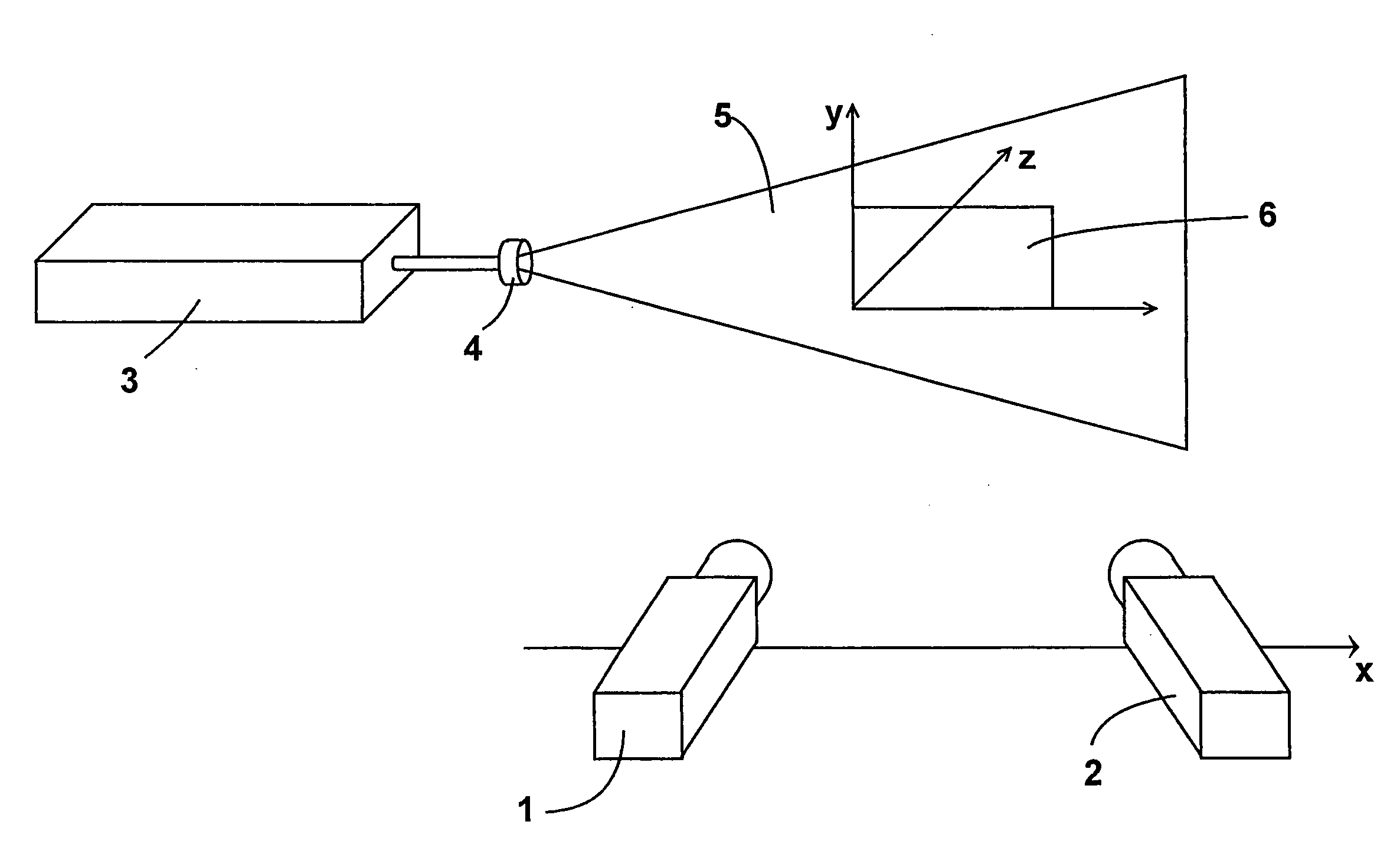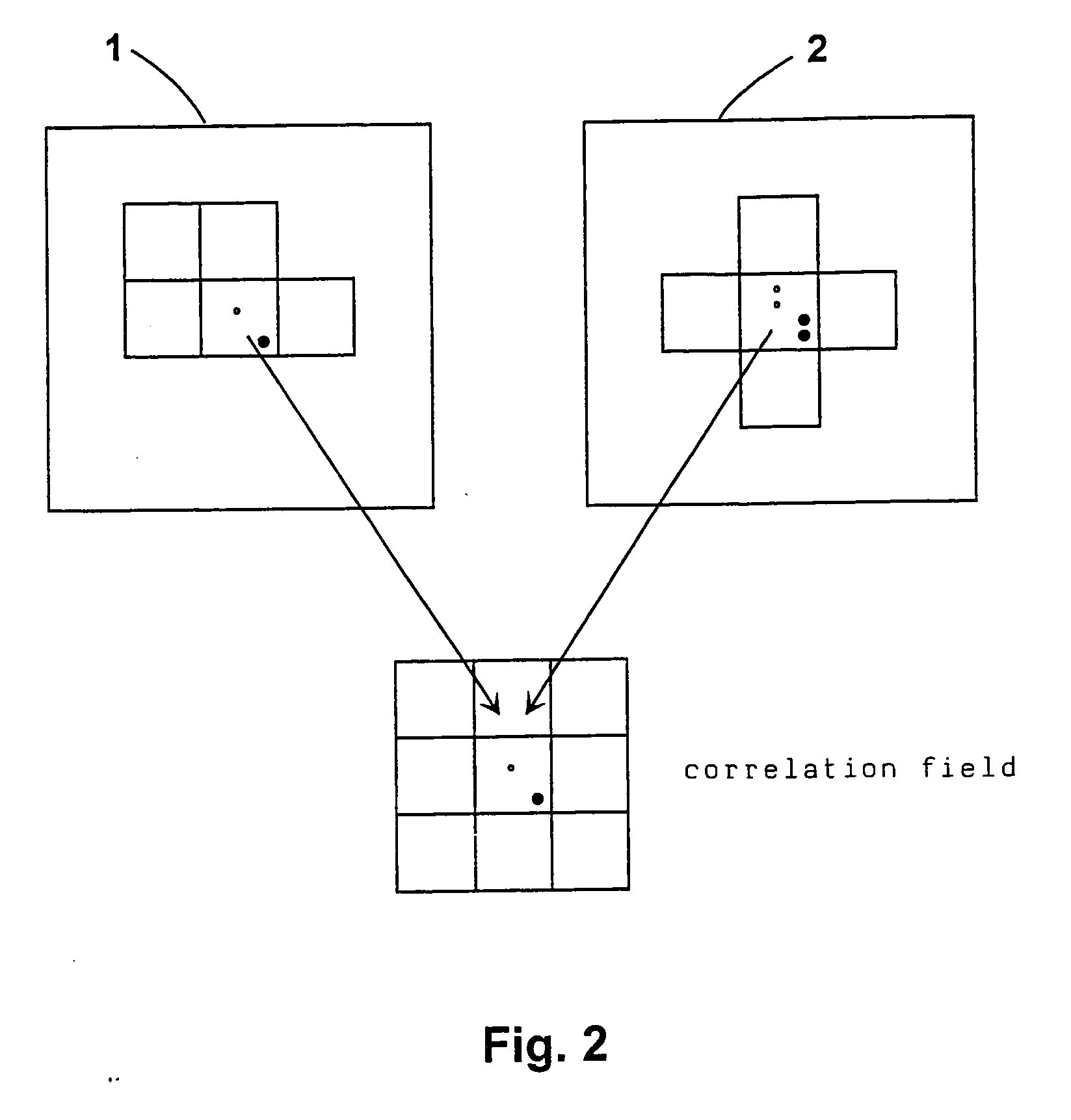Method of determining the imaging equation for self calibration with regard to performing stereo-PIV methods
a self-calibration and imaging equation technology, applied in the direction of full-field flow measurement, indication/recording movement, television systems, etc., can solve the problems of high cost of calibration, easy errors, and high percentage of errors at strong velocity gradients
- Summary
- Abstract
- Description
- Claims
- Application Information
AI Technical Summary
Problems solved by technology
Method used
Image
Examples
example 2
[0025] The same experimental set-up is used as in Example 1. It is also assumed that the objective of the camera is angled relative to the camera plane in order to fulfill the Scheimflug condition so that all of the particles in the illuminated section are in focus. In this example, no previous calibration is provided, an imaging equation is intended to be determined from the very point correspondences. This is achieved using a direct approximation method in which the missing image parameters are fitted. Since there are too many free parameters, certain assumptions must be made in order to converge on a solution. There are various possibilities to reduce the number of free parameters with the help of known conditions:
[0026] It is assumed that it is known from a previous calibration of the Scheimflug adapter, which has only to be carried out once, how the principal point is displaced as a function of the angle, or the Scheimflug condition is calculated directly from the geometry. Acc...
PUM
 Login to View More
Login to View More Abstract
Description
Claims
Application Information
 Login to View More
Login to View More - R&D
- Intellectual Property
- Life Sciences
- Materials
- Tech Scout
- Unparalleled Data Quality
- Higher Quality Content
- 60% Fewer Hallucinations
Browse by: Latest US Patents, China's latest patents, Technical Efficacy Thesaurus, Application Domain, Technology Topic, Popular Technical Reports.
© 2025 PatSnap. All rights reserved.Legal|Privacy policy|Modern Slavery Act Transparency Statement|Sitemap|About US| Contact US: help@patsnap.com



